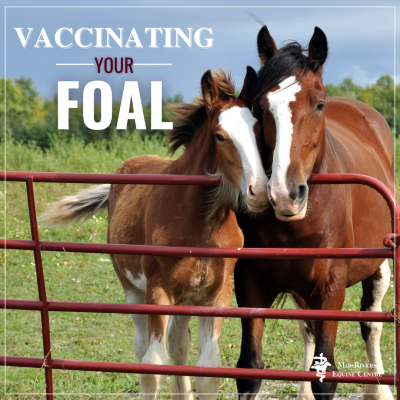General Horse Health
A horse would do well to have one week of rest for every day they ran a fever. However, if complications arise or secondary bacterial infections occur, rest recommendations are likely to be extended by your primary care veterinarian.
 Yes, but only AFTER you’ve softened the scabs. Apply an ointment directly to scabs and let it sit. When scabs become pliable, you can gently remove them. Then follow your primary care veterinarian’s instructions for ongoing treatment.
Yes, but only AFTER you’ve softened the scabs. Apply an ointment directly to scabs and let it sit. When scabs become pliable, you can gently remove them. Then follow your primary care veterinarian’s instructions for ongoing treatment.
Avoid aggressive scrubbing or picking of crusty dry scabs – it is painful.
An important key to resolving scratches is housing the horse in a clean, dry environment. Modifying the living situation until the infection is under control may be necessary.
 Foals should begin receiving their first core vaccinations at 6 months of age. The American Association of Equine Practitioners (AAEP) recommends tetanus, Eastern/Western Equine Encephalomyelitis (EEE/WEE), West Nile Virus, and Rabies. Help keep your vaccine schedule on track by downloading AAEP’s complete Foal Vaccination Cart with expanded details, booster timelines, and information on risk-based vaccines at AAEP .
Foals should begin receiving their first core vaccinations at 6 months of age. The American Association of Equine Practitioners (AAEP) recommends tetanus, Eastern/Western Equine Encephalomyelitis (EEE/WEE), West Nile Virus, and Rabies. Help keep your vaccine schedule on track by downloading AAEP’s complete Foal Vaccination Cart with expanded details, booster timelines, and information on risk-based vaccines at AAEP . White Line Disease is caused by spore-forming bacteria. To date, twenty-two different types of fungal spores have been identified. The condition occurs when pathogens invade a weak or compromised hoof wall where they deteriorate the non-pigment portions of the horn wall.
White Line Disease is caused by spore-forming bacteria. To date, twenty-two different types of fungal spores have been identified. The condition occurs when pathogens invade a weak or compromised hoof wall where they deteriorate the non-pigment portions of the horn wall.
Radiographs confirm a diagnosis of white line disease by capturing the presence of gas trapped in the hoof wall. Treatment includes removal of the diseased hoof wall, allowing oxygen to reach and kill the bacteria.
The disease is often associated with laminitis.
 We have probably all heard we should not place ice directly on the skin. This is true when treating horses, too. While ice freezes at 32 degrees Fahrenheit it is often much colder. Ice from a typical kitchen freezer can be as cold as -20 F.
We have probably all heard we should not place ice directly on the skin. This is true when treating horses, too. While ice freezes at 32 degrees Fahrenheit it is often much colder. Ice from a typical kitchen freezer can be as cold as -20 F.
Burn occurs when ice is placed directly on the skin. The skin begins to freeze, and ice crystals form within the cell structure causing damage, or “ice burn”.
To avoid crystal formation and ice burn, soak foot and leg injuries in a bucket of ice water. For injuries that cannot be soaked, place a layer of cloth between the ice pack and the skin.
